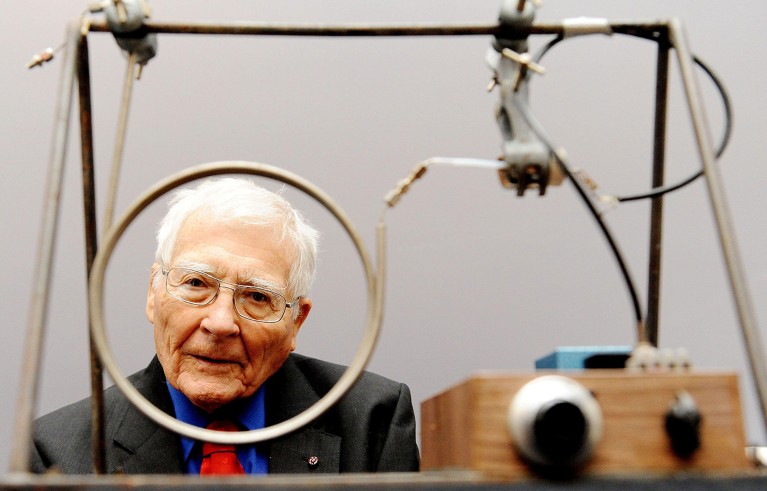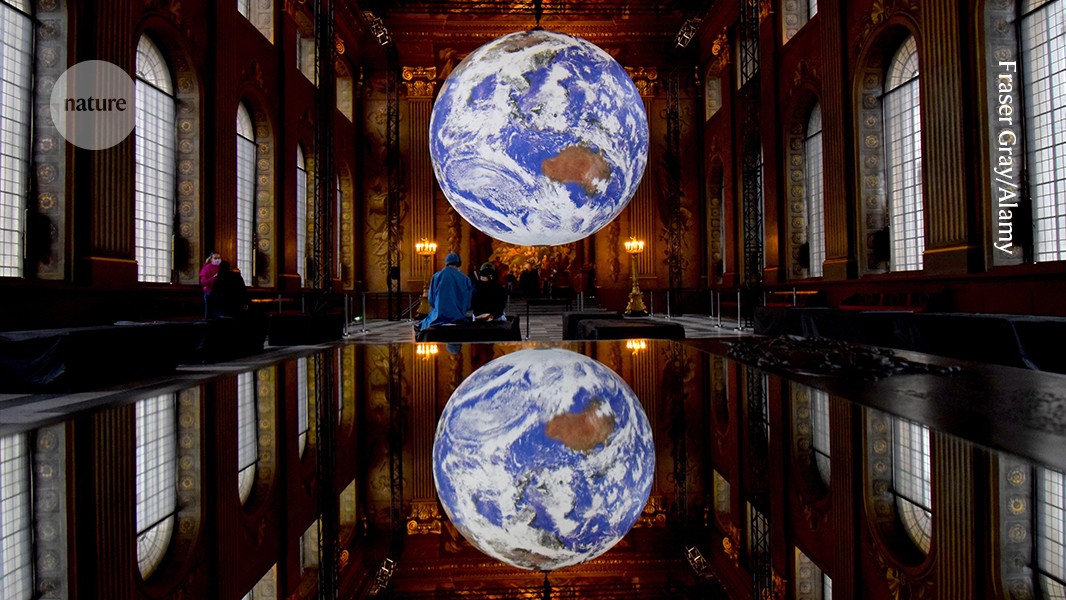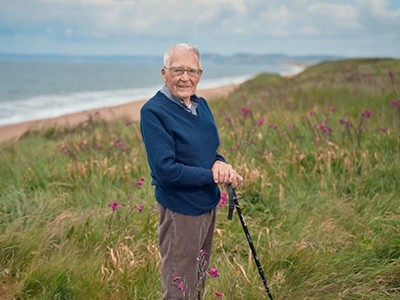The Many Lives of James Lovelock: Science, Secrets and Gaia Theory Jonathan Watts Canongate Books (2024)
Today, it might seem self-evident that life on Earth shapes, and is shaped by, its environment. We learn in school that the oxygen we breathe is produced by plants, for instance. For those of us aware of the climate crisis, feedback loops between human activity and the global climate system are never far from our minds. But this holistic view of the planet was controversial when it was put forward as the Gaia hypothesis in the 1970s.
The Burning Earth: how conquest and carnage have decimated landscapes worldwide
In The Many Lives of James Lovelock, environmental journalist Jonathan Watts examines the long life of James Lovelock, the chemist and inventor who is typically credited for the Gaia hypothesis. Lovelock died in 2022 at the age of 103. Despite covering more than a century’s worth of material, Watt’s biography is a zingy read, keeping an energetic pace without feeling superficial. Those interested in the environment, the history of science and the human drama behind scientific discoveries will all enjoy the ride.
Tellingly, Watts names his chapters after the many people who influenced Lovelock, challenging the classic narrative of the ‘solitary genius’ as the source of scientific breakthroughs. The book is by no means a take-down of Lovelock, whom Watts interviewed extensively and clearly has much affection for. But the picture that emerges is of a man who stumbled sideways into environmentalism after a lifetime as an apologist for the chemical and oil industries; a thinker whose greatest strength was synthesizing the clever ideas of others; and a rather naive and emotionally maladroit man who hurt a lot of people.
It takes two
As Watts tells it, the Gaia hypothesis grew out of two close collaborations. The first was with philosopher and systems analyst Dian Hitchcock in the mid-1960s at the Jet Propulsion Laboratory in Pasadena, California. Together, Lovelock and Hitchcock suggested that the presence of life on any planet could be inferred from its atmosphere. Hitchcock’s ideas were central to Lovelock’s thinking, and they wrote several papers together. But the pair were also lovers, and after the married Lovelock ended the affair in 1967, he cut Hitchcock out of his work.
James E. Lovelock (1919–2022)
Then, in the early 1970s, microbiologist Lynn Margulis sought out a collaboration with Lovelock. Margulis brought to his thinking an understanding of how bacteria can affect Earth’s atmosphere by releasing gases, and a fascination with interdependent networks.
Margulis and Lovelock published the Gaia hypothesis in the journal Tellus after being rejected by Nature (J. E. Locklock & L. Margulis Tellus 26, 2–10; 1974). They posited that Earth could be thought of as a single living thing. Just as an animal maintains a balance between systems in its body and emits waste products, so does Earth maintain an atmosphere inside of which life can thrive and emit waste as infra-red radiation to space. “The total ensemble of living organisms which constitute the biosphere can act as a single entity to regulate chemical composition, surface pH and possibly also climate,” as Margulis and Lovelock put it.

James Lovelock with a device he invented to measure gas and molecules in the atmosphere.Credit: PA Images/Alamy
No consciousness or intent was implied on the part of this entity, but the use of the name of the Ancient Greek mythological Earth goddess Gaia to describe it — a name suggested by Lovelock’s friend and neighbour, the novelist William Golding — introduced a mystical overtone that would irritate and alarm scientists for decades to come. The mythos around Gaia might even have delayed acceptance of Lovelock and Margulis’s ideas, but it also kept the public interested and Lovelock in demand. Over the years that followed, Gaia eventually evolved into a kind of amorphous environmental spirituality, and it remains a spiritual touchstone that lives on in the minds and hearts of untold numbers of environmentalists.
Rise of Gaia
The publication that propelled Gaia to fame was a 1975 article in New Scientist called ‘The Quest for Gaia’, authored by Lovelock and a perhaps unexpected partner — Sidney Epton, a wordsmith working for the oil company Shell. In fact, Lovelock spent most of his career working as a consultant for oil companies, chemical companies and the British Secret Service, and for much of his life he exhibited a “deeply entrenched fealty to industry”. Watts chronicles Lovelock’s early discoveries of the dangers of climate change in 1966, of leaded gasoline in 1967 and of chlorofluorocarbons in 1972 — and his consistent failure to do anything with this information other than hand it over to his industry paymasters.
Many of Lovelock’s industrial clients were initially enthusiastic about the idea of Gaia. As he first characterized it, she could absorb anything industry could throw at her. In his first Gaia book, published in 1979 (with an uncredited ghostwriter, Lorna Frazer), he waves away concerns about pollution, reassuring readers that Earth can and will adapt. Margulis edited such apologias out of his second book on the topic, 1988’s The Ages of Gaia, and Lovelock’s level of concern about the environment seemed to wax and wane over the years, depending on who was influencing his thinking.
The meaning of the Anthropocene: why it matters even without a formal geological definition
For the rest of his life, Lovelock remained a champion of Gaia — and even grew to think of the entity as a kind of personal goddess to which he turned in times of distress. But he was easily swayed by attention and flattery, lending Gaia’s name and his increasingly valuable personal brand to causes across the political spectrum, careening from climate doomism to climate scepticism.
His 2006 bestseller The Revenge of Gaia predicted imminent societal collapse and the death of billions of people owing to climate change. Yet in 2017, Lovelock nearly joined the board of the Global Warming Policy Foundation, a controversial London-based organization that questions climate-change policies. “When it came to politics,” Watts writes, “he was either too naive, too conservative or too lacking in confidence to do anything but defend the status quo.”
From the vantage point of 2024, Gaia’s discovery and articulation seem inevitable. Indeed, Lovelock was arguably scooped by Soviet geochemist Vladimir Vernadsky, who in 1926 characterized the biosphere as an “indivisible mechanism” that shapes its own environment. The scientific legacy of the Gaia hypothesis lives on in the research field of Earth-system science, which explores planet-scale relationships.
Reading Watt’s biography of Lovelock, one gets the sense that he was a man at the right places at the right times. Had he not been Hitchcock’s lover, or Margulis’s collaborator or Golding’s neighbour, he might never have stumbled on the idea of Gaia, and someone else would have come to the same conclusion. It was a truth waiting to be articulated.
If you wanted to be spiritual about it, you could argue that Gaia chose Lovelock as her messenger, despite — or perhaps because of — his evident personal failings. You’d expect a tree-hugger to tell you that the planet is one vast interconnected system powered by life. But when a scientist paid by Shell and Dow Chemical delivers the message, you believe it.





